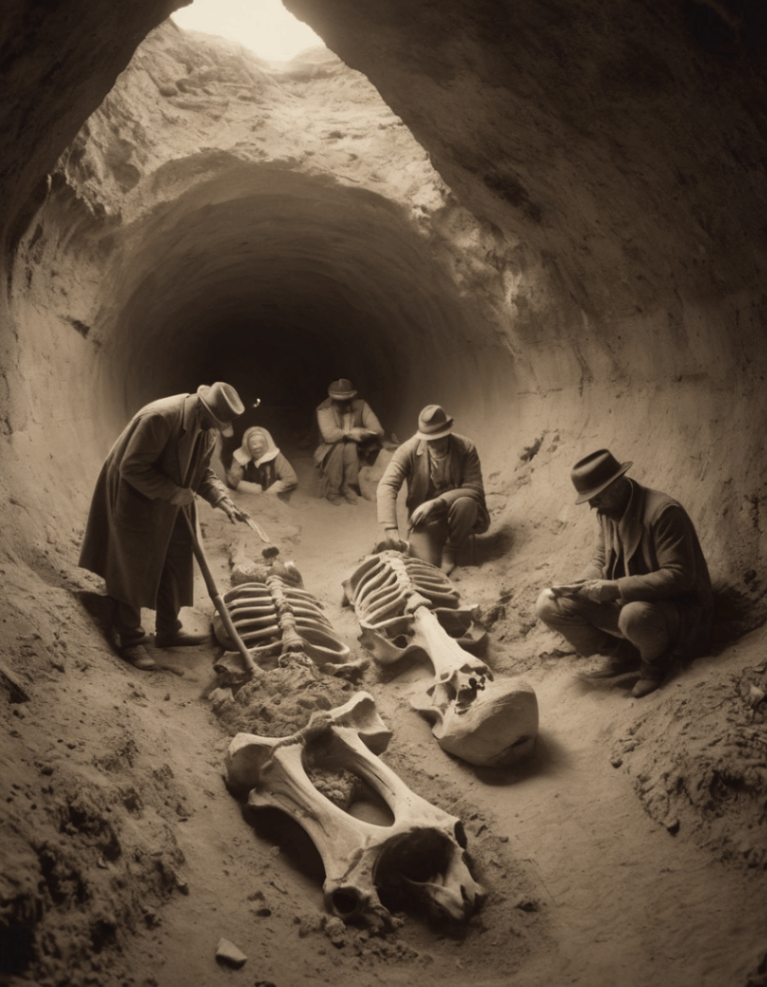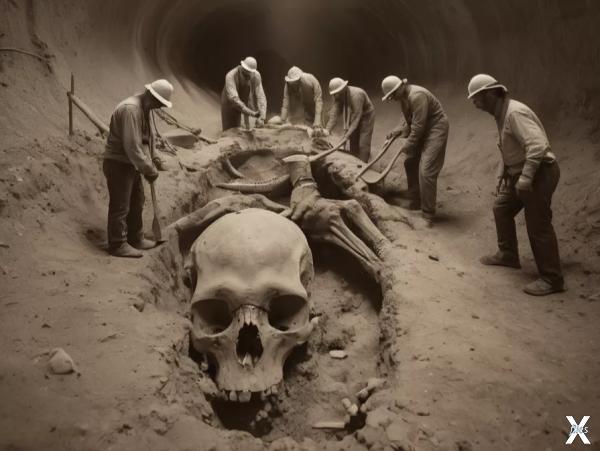In the year 1838, a remarkable discovery was made that would baffle scientists and historians for centuries to come: the unearthing of a colossal skull in a remote valley in South America. This discovery, often referred to as the “Chronicles of the Colossal Skull,” has become one of Earth’s most enduring enigmas, challenging our understanding of ancient history and human evolution.
The skull, measuring over three meters in circumference, was discovered by a group of local miners who were excavating a new site for gold. Initially, they thought they had stumbled upon the remains of an enormous prehistoric animal. However, closer inspection revealed features distinctly human yet inexplicably larger than any known human skull. The discovery quickly attracted the attention of scientists and researchers from around the world.

Dr. Augustus Wellington, a renowned archaeologist of the time, led the first scientific expedition to study the skull. His team conducted various tests and analyses, attempting to determine its origin and age. Radiocarbon dating suggested that the skull was over 10,000 years old, placing it well before the dawn of known civilizations. The sheer size of the skull suggested the existence of a humanoid species that was significantly larger than modern humans, sparking debates about the possibility of ancient giants.

Despite extensive research, the origins of the colossal skull remain shrouded in mystery. Some theories propose that it belonged to an extinct species of hominid, while others suggest it could be evidence of a lost civilization of giants. There are also those who believe it might be a relic from an advanced ancient society that possessed knowledge and technology far beyond what we understand today.

The Chronicles of the Colossal Skull have inspired numerous expeditions and studies over the years. In the early 20th century, an international team of scientists conducted a comprehensive study using the latest technology of the time, including early forms of X-ray and chemical analysis. Their findings, however, were inconclusive, leaving many questions unanswered.
In recent years, advancements in genetic research and imaging technology have provided new opportunities to explore this ancient enigma. Modern scientists are now re-examining the skull, hoping to extract DNA samples that could provide insights into its origins and the lineage of the giant human-like creature. These efforts aim to shed light on whether the colossal skull represents a unique evolutionary path or an anomaly in the fossil record.
The Chronicles of the Colossal Skull continue to captivate imaginations and fuel scientific curiosity. As we unravel the mysteries of this ancient enigma, we not only seek to understand a forgotten chapter of Earth’s history but also to explore the possibilities of human evolution and the potential existence of civilizations lost to time.





